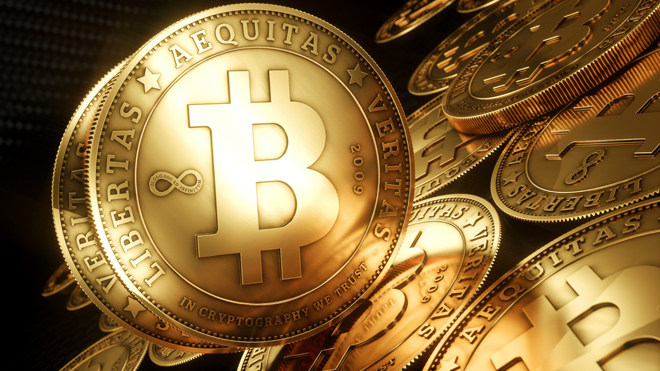Blockchain’s Bitcoin Campaign: Great Advertising … Great Product?

The best way to kill a bad product is with good advertising, and Bitcoin is the ad to end all ads for blockchain technology. People get tattoos of Bitcoin, not Uber. Thus far, Bitcoin and ICOs are blockchain’s two killer apps. BTC’s over 10x increase in market cap in 2017—and the expectation that it will continue (e.g., noted here last month was a conference panel’s 1-year price target north of $20,000)—will likely turbocharge the influx into these apps of entrepreneurial, software development, and big corporate resources. These resources will slosh into a wide range of infrastructure and domain-based verticals, including media. ICOs, bubble or bust, are a way of monetizing the utility of blockchain software development through tradable tokens used by blockchain protocols and decentralized apps. These tokens have already attracted capital raises by legacy media companies (e.g., Kik) as well as whitepaper wizards (e.g., AdEx), and barring complete regulatory Armageddon, are likely to continue to do so.
As apps, Bitcoin and ICOs are penultimate, however—the promise of there is greater than the there that is there now. In 2017, bitcoin’s rise in value easily outstripped reasonable estimates of the value of the improvements in the technology and supporting infrastructure. Don’t just take my word for it … ask Galaxy Investment Partners, one of the funds early to invest in crypto, whose head put out before Thanksgiving a $10,000 year-end bitcoin price target. As BlockTower Capital, another forward fund manager, puts it, one central thesis for investing in bitcoin is its potential to be, one day, a store of value free from state censorship. That day is not today, which is fine, as investments are about the future. ICOs have raised billions in 2017, but if there’s a utility token on the cusp of capturing the crypto community, much less recruiting to the crypto cause the great unwashed masses still fixated on fiat, I’m not aware of it. Crypto’s “email moment” has yet to arrive.
For years, Warren Buffett avoided tech investments because he said he did not understand the technology well enough—how would you adapt this approach to the inscrutable blockchain? Techwise, blockchain is some tricky trick, different in kind and not just degree. Cryptography, distributed computing, game theory, token economics, and new software programming languages are among the intellectual challenges facing blockchain investors. Applying a strict Buffett rule would keep you from investing in crypto, period, and in fact, Buffett has recommended that investors steer clear.
Of course, Buffett now owns stock in Apple, so the old dog has learned some new tricks; in that vein, what might work for those seeking some “exposure to the cryptocurrency asset class,” in the vernacular of the financial advisor perhaps seeking to cloak what others call rank speculation. Let’s look first at some reasonable approaches, and second, at some paths that may offer more promise than performance.
In tokens we trust … our investment edge. A standard critique of ICOs is that they look to raise money for projects that could not garner much if any angel or early-stage VC funding. It comes down to the token, which is the most likely source of an investor’s “variant perception,” as termed by another legendary investor, Michael Steinhardt. Traditional angels and VCs likely lack an edge in valuing tokens, and may actually have biases that are baggage when trying to do so. Token economics and token valuation are linked, and we know at least this much: token value rises with greater demand for the resource provisioned by the token, and falls with higher token velocity (shorter holding periods). Principles of token valuation are still being uncovered, but the mindset of a model, even if incomplete, helps discipline the due diligence done on the project-meisters.
For utility tokens, which have made up most token sales in 2017, assess the case for whether the tokens are essential to providing either a completely new product or service or an existing product or service at higher quality and/or lower cost.
- First, not all utility token networks are alike. For example, in some cases, the token seller is also a (the) service provider, in some cases not. The distinction may bear on the token economics and legal classification of the token sales.
- Second, despite the fashion of deference to decentralization, a mix of centralization and decentralization may maximize network value. Decentralization does not improve every process, nor deliver it at lower cost, and programming business processes onto the blockchain bug-free is no mean feat.
- Third, in many cases, value creation of a tokenized networked must be benchmarked against the current economics of non-blockchain competitors. The investment decision may hinge on whether incentives (through mining rewards, transaction fees, etc.) lead decentralized actors to deliver promised functionality at a competitive price.
· Fourth, the allocation of value among the tokenized protocol and apps running on the protocol is likely to vary among different blockchains.
- Finally, in selling and transacting with utility tokens, more than most early-stage assets, legal risks may best be viewed as a cost of doing business, more likely managed than eliminated. In the U.S., there often may be no one right path for utility token sales, especially when considering post-sale project functionality (e.g., sales of securities may come with nettlesome holding requirements). A bright spot is that unregulated utility token sales appear welcome in the U.K., although the picture in the rest of the EU may be changing.
Here are a few other observations on token economics and valuation, with a slant to media blockchain applications.
- ICOs could be another vehicle for direct-to-consumer selling, potentially particularly attractive to the biggest talent. Louis C.K., early to direct-to-consumer, might now have to dig into his pocket for a coin of his own.
- Over the longer term, decentralization in content distribution could pressure networks and big tech platforms. In a world where marquee properties seem more rare than networks, decentralized apps might surpass networks in curation. Decentralization could make spats between tech giants about content access (e.g., Amazon vs. Google) irrelevant.
- A token network provisioning consumer actions may have advantages over one provisioning third party business services. Third party service providers participating in a decentralized network have known costs which new tokens must cover, while consumers may be more likely to see new token compensation as pure upside, whatever its value.
- Tokens can help spur gamification, but likely subject to diminishing marginal returns.Whether inside or outside of media use cases, a large new reward for doing the same activity likely beats a smaller reward for doing a different activity. Think of social networks—they offered a better version of email, partly due to gamification of status, at no extra cost, and took off.
- Fears of eventual token fatigue may be overblown. Just as consumers are used to dealing with many sellers and brands, they could likely deal with many coins, especially as trading/conversion among coins becomes more seamless.
Let’s close with two coin cautions, about data mining as an investment tool, and the investor skills needed for the new world of token investment.
- First, beware the carnival barker with access to a spreadsheet and a quant.It is the age of data, but scraping the web for scuttlebutt on blockchain projects may surface more fool’s gold than the real thing, digital or otherwise. The number and maturity of tokenized protocols are likely too low to support statistically significant correlations between early stage data and later stage profits—most have not yet even delivered their promised services. The chatter of 20-something tech geeks may miss the larger commercial ecosystems into which blockchain projects must fit to gain traction.
- Second, in these early days, it is not yet clear which skill sets make for good blockchain investing. On the one hand, many ICOs are for early-stage projects, the bailiwick of those with longer-term horizons, like those in private equity or venture capital. However, the liquidity of tokens—one of their big differentiators from other early-stage investments—may put investors accustomed to longer investment horizons into the brave new world of short-term token trading, and attract those with that skill set as well. Indeed, the improvement in token liquidity, facilitating such strategies, has surprised some big names in crypto this year. Data mining may be better for assessing the outlook for an ICO’s fund raise than for the prospects of the project itself. That raise, and whether it hits its hard cap, for example, may be a predictor more of post-sale token price performance in the near term than the long term.
The opinions and points of view expressed in this content are exclusively the views of the author and/or subject(s) and do not necessarily represent the views of MediaVillage.com/MyersBizNet, Inc. management or associated writers.


